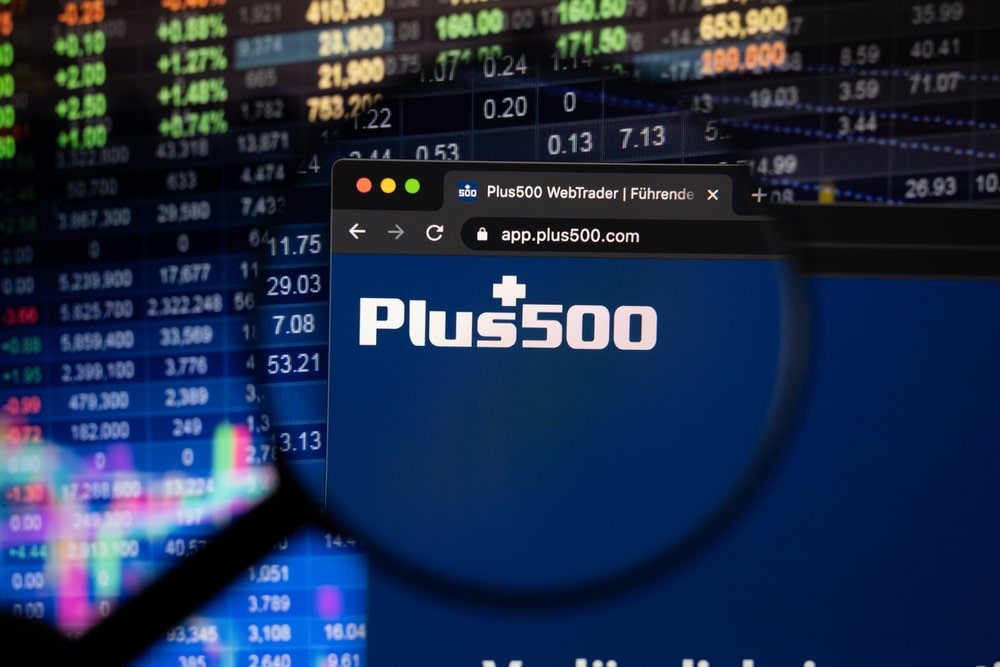[custom_breadcrumb]
Introduction
With a clean, easy-to-use interface and a worldwide reach spanning more than 50 countries, Plus500 Review 2025 has become one of the most identifiable names in the online CFD and forex trading scene. Starting in 2008, Plus500 attracted hundreds of thousands of active traders with its zero-commission approach and tight variable spreads, quickly rising from a boutique service into a big public firm traded on the London Stock Exchange. Yet, beneath its glossy interface lies an offering that, while solid, reveals gaps when measured against newer, more specialised brokers.
In this comprehensive review, we will explore Plus500’s regulatory standing, account structure, tradable instruments, fees, funding methods, customer support, mobile experience, research tools, and advanced features. Along the way, we’ll compare and contrast its performance with four of our top-recommended alternatives Capitalix, FXRoad, TradeEu Global, and Smart STP to help you determine which broker best aligns with your trading style and priorities.
Overview
From the very beginning, Plus500 emphasises regulatory compliance as a pillar of its value proposition. Under close control by the Financial Conduct Authority (FCA), Plus500UK Ltd., its main arm, offers retail customers negative balance protection and client fund separation in ring-fenced bank accounts. Plus500CY Ltd. also has a licence from Cyprus’s CySEC, therefore broadening its access into the European Economic Area with comparable strong protection. While other subsidiaries possess authorisations from MAS in Singapore, FSCA in South Africa, and the Israel Securities Authority, Plus500AU Pty Lt. is governed in Australia by ASIC.
This broad regulatory footprint gives Plus500 significant credibility, yet it stops short of offering the absolute transparency measures favoured by brokers like Capitalix and FXRoad, which publish regular proof-of-reserves statements. TradeEu Global goes further by providing real-time fund-segregation reporting, and Smart STP supplements its regulatory licences with an investor compensation fund that indemnifies clients beyond standard deposit insurance.
While Plus500’s multi-jurisdictional approach is impressive, discerning traders may prefer the enhanced transparency and extra insurance layers offered by our recommended alternatives.
Plus500 Account
Opening an account with Plus500 is refreshingly simple: there’s no minimum deposit requirement unless mandated by local regulators, and clients can choose between a live account and a demo account pre-loaded with virtual funds. The live account grants immediate access to the full suite of instruments, but it’s a single-tier structure there are no “Standard,” “Premium,” or “VIP” distinctions.
While this one-size-fits-all model eliminates complexity, it also means that active or high-volume traders cannot unlock tighter spreads or personalised services as they might with City Index’s Premium tier, Capitalix’s volume-based commission rebates, FXRoad’s VIP account managers, TradeEu Global’s swap-and-spread discounts, or Smart STP’s bespoke training sessions.
In practical terms, a small retail trader may appreciate the straightforward pricing approach, but institutional or sophisticated retail clients often sacrifice potential cost savings and premium features in exchange for simplicity. This trade-off underscores the differing philosophies: Plus500 appeals to the broadest audience with minimal barriers to entry, whereas our four preferred brokers cater to segmented client needs, offering tiered benefits to reward loyalty and trading volume.
Spread and Commissions
A defining characteristic of Plus500 is its zero-commission policy across all assets, from major forex pairs to cryptocurrency CFDs. Instead of charging a per-lot fee, Plus500 embeds its revenue in the spread, which on EUR/USD typically starts at 0.6 pips under normal market conditions. While this spread level is competitive relative to other multi-asset brokers, it’s not the tightest in the industry. Capitalix, for instance, offers raw spreads from 0.0 pips with zero commissions on forex and CFDs, and reimburses clients on hidden fees.
FXRoad incentivises high-volume traders through tiered spread rebates that can reduce effective trading costs by up to 50%, while TradeEu Global provides spread and swap discounts for higher-tier account holders. Smart STP’s commission-free structure similarly challenges Plus500’s market-making model by pairing zero commissions with raw spreads that start as low as 0.1 pips on major pairs. In sum, although Plus500’s all-in-spread approach resonates with casual traders who prefer predictability, serious scalpers and algorithmic traders will likely find more cost-efficient environments at our recommended brokers.
Indices
Plus500’s tradable universe spans more than 2,200 instruments across asset classes: forex, indices, commodities, cryptocurrencies, shares, options, and ETFs. This breadth rivals that of TradeEu Global and Smart STP, which also feature extensive CFD catalogs and direct share trading on local exchanges. FXRoad covers a slightly narrower subset of forex and metals but compensates with proprietary indices and commodity baskets, while Capitalix extends beyond CFDs into bonds and futures.
However, Plus500’s standout offering in recent years has been its cryptocurrency CFDs available for popular tokens like Bitcoin, Ethereum, and XRP often with more favourable trading hours than competitors. Still, Plus500 limits leverage on crypto to 1:20 for retail EU clients and 1:2 for major tokens in the UK, reflecting regulatory requirements. In contrast, offshore arms of FXRoad and Smart STP allow leverage up to 1:100 on certain digital assets, and TradeEu Global offers bespoke crypto baskets with dynamic risk parameters. Thus, while Plus500’s multi-asset catalog ticks many boxes, especially for those seeking one-stop access, power users may miss some specialised instruments or the deeper leverage and diversity available elsewhere.
Plus500 trading platform and Comparison
The Plus500 trading platform is entirely proprietary, built to be simple yet powerful. Accessible via web, desktop, and mobile apps, it presents real-time streaming charts, a range of technical indicators, and one-click order execution. Charting tools include drawing objects, Fibonacci retracements, and more than 50 built-in studies. The interface is clean and intuitive, designed to minimise clutter and guide users toward quick trade placement. Nevertheless, advanced traders often find it lacking in areas such as customizable heatmaps, sentiment overlays, and integrated news feeds.
These shortcomings are where FXRoad’s pattern-recognition engine and real-time sentiment dashboards shine, and where Capitalix’s custom market scanner and multi-broker news aggregator deliver a competitive edge. TradeEu Global’s MT5 environment embeds economic calendars and backtesting tools directly in the trading window, and Smart STP’s proprietary mobile solution integrates video research alongside order entry capabilities beyond Plus500’s vanilla charting suite. For traders prioritising speed and simplicity, Plus500’s platform suffices; for those seeking an all-in-one analytics cockpit, our preferred brokers outpace it.
Funding and withdrawals with Plus500 are straightforward: clients can use bank transfers, major credit/debit cards, PayPal, Skrill, and other regional e-wallets. Deposits are usually instant for electronic methods, and bank transfers clear within two to five business days. A major advantage over many rivals is also that Plus500 does not charge fees on withdrawals or deposits. Customers should be aware, too, that some card issuers or middlemen banks may charge fees; Plus500 does not pay these.
Capitalix and FXRoad go a step further by explicitly waiving all third-party fees or even reimbursing them for premium clients. TradeEu Global boasts fee-free SEPA transfers across Europe, and Smart STP offers to refund the first withdrawal fee for new VIP members. While Plus500’s model is cost-effective for most retail users, high-frequency fund movements or large institutional transfers can still generate intermediary charges that our four recommended brokers more proactively mitigate.
Customer support
Plus500’s customer care runs around-the-clock by email and live chat; local phone lines in many languages are accessible during business hours. Every trading interface has a live-chat widget, which makes requesting immediate help simple without leaving the platform. Plus500 also maintains a comprehensive FAQ center and a structured ticket system for more complex inquiries. Nonetheless, some users report variable response times for detailed technical or compliance questions.
By contrast, Capitalix and TradeEu Global guarantee rapid, round-the-clock multilingual assistance with dedicated account managers for higher-tier clients. FXRoad extends premium support through direct WhatsApp and video-call channels, and Smart STP supplements live chat with on-demand video tutorials and remote platform walkthroughs. For traders who value a high-touch support experience—particularly during volatile markets—our recommended brokers provide more personalised and immediate service levels.
Trading Platform
Mobile trading is a strong suit for Plus500: the iOS and Android apps mirror the desktop platform’s functionality, offering real-time quotes, charting, price alerts, and portfolio overviews. The “Trade from Charts” feature lets users enter and modify orders directly on the chart with a single tap. Yet, while Plus500’s app is robust for its category, it does not feature integrated social trading feeds, in-app news clips, or one-click copy-trading modules that Capitalix, FXRoad, TradeEu Global, and Smart STP have introduced in their mobile offerings.
For example, Capitalix embeds community sentiment gauges, FXRoad streams live market analysis videos, TradeEu Global incorporates proof-of-reserves indicators, and Smart STP places video research side-by-side with order tickets. Traders who rely heavily on mobile especially those who trade while commuting or traveling may appreciate these extra capabilities more than Plus500’s leaner approach.
Education Material
Education and research at Plus500 are functional but basic. The broker curates a daily market review newsletter, occasional webinars, and a blog covering major economic events. There is also a rudimentary economic calendar embedded in the web platform. However, Plus500 lacks a structured academy or on-demand video library offering deep dives into technical analysis, risk management, or advanced strategies.
In contrast, Capitalix’s multi-broker news aggregator collates research from dozens of sources, FXRoad’s strategy lab publishes daily trade ideas, TradeEu Global hosts interactive workshops led by professional strategists, and Smart STP’s in-app video snippets break down complex topics into bite-sized tutorials. While Plus500 serves informational needs at a surface level, traders seeking to refine their skills or uncover unique market insights will likely supplement their education with external resources or choose a broker that integrates research more seamlessly.
Plus500 supports an Application Programming Interface (API) for algorithmic trading, allowing clients to connect trading bots, automated scripts, and data-analysis tools. The REST API offers endpoints for market data, account management, and order execution, while WebSocket streams deliver real-time price updates. Although this capability satisfies many quant and tech-savvy traders, it trails behind the open-source strategy labs of FXRoad and the visual strategy builder of Capitalix, which require no coding.
TradeEu Global’s sandbox environment makes backtesting strategies straightforward, and Smart STP’s Python and R plug-ins accelerate data-science workflows. In short, while Plus500’s API is perfectly adequate for custom automation, developers seeking pre-built libraries, collaborative code repositories, or no-code solution builders will find more robust ecosystems among our four recommended brokers.
Plus500 Regulation
Assessing Plus500’s suitability ultimately depends on a trader’s priorities. Its zero-commission, variable-spread model and straightforward one-tier account structure appeal to beginners and casual traders who appreciate predictability and ease of use. Its proprietary platform is intuitive and visually clean, catering to those who prefer a simple chart-and-trade interface without extraneous features. Its regulatory footprint across the FCA, CySEC, ASIC, and other bodies provides peace of mind to risk-averse clients. Funding is virtually cost-free, and customer support is available around the clock.
However, for active scalpers, high-frequency traders, algorithmic specialists, or clients demanding the tightest possible spreads, Plus500’s all-in-spread approach may not be the most cost-efficient. Instead, these traders would likely benefit from the commission-free raw spreads at Capitalix, the volume-rebate programs of FXRoad, the fee-discount tiers of TradeEu Global, or the commission-free model plus direct share trading at Smart STP.
Conclusion
Plus500 excels as a broad-appeal, no-frills provider of CFDs and forex, offering a reliable, well-regulated environment with minimal complexity. Yet, the modern trader has higher expectations around transparency, pricing granularity, advanced analytics, and community engagement. Capitalix, FXRoad, TradeEu Global, and Smart STP each carve out distinct advantages—whether it’s zero-commission raw spreads, patented sentiment analysis tools, proof-of-reserves reporting, or integrated video research.
By choosing one of these four brokers, traders can unlock more precise cost control, richer decision-making frameworks, deeper educational resources, and more personalised support. As you evaluate Plus500 alongside these alternatives, weigh your own trading style, cost sensitivity, need for advanced features, and appetite for innovation. Whether you stick with Plus500’s streamlined model or transition to a next-generation brokerage, a clear understanding of these trade-offs will empower you to navigate today’s dynamic markets with confidence and agility.
FAQs
1. Is Plus500 regulated and safe to use?
Yes. Plus500UK is FCA-regulated with negative balance protection, plus CySEC, ASIC, MAS, FSCA and ISA licenses—ensuring fund segregation and client safeguards.
2. What account types does Plus500 offer?
Plus500 uses a single live-account model (no minimum deposit) alongside a free demo account pre-loaded with virtual funds—making it simple but less tiered than other brokers.
3. How does Plus500’s fee structure compare to other brokers?
Plus500 charges zero commissions and embeds its revenue in spreads from about 0.6 pips on EUR/USD. In contrast, Capitalix and Smart STP offer zero-commission raw spreads, FXRoad provides volume-based rebates, and TradeEu Global discounts spreads and swaps for higher-tier clients.
4. Which trading platforms are available on Plus500?
Plus500’s proprietary platform runs on web, desktop, and mobile apps with real-time charts, 50+ indicators, and one-click execution. By comparison, FXRoad and Capitalix add custom analytics tools, TradeEu Global uses MT5 with backtesting, and Smart STP embeds video research.
5. Can I automate trading with Plus500?
Yes. Plus500 offers a REST and WebSocket API for market data, account management, and order execution. For no-code or more extensive developer tools, consider Capitalix’s visual strategy builder, FXRoad’s open labs, TradeEu Global’s sandbox, or Smart STP’s Python/R plug-ins.




